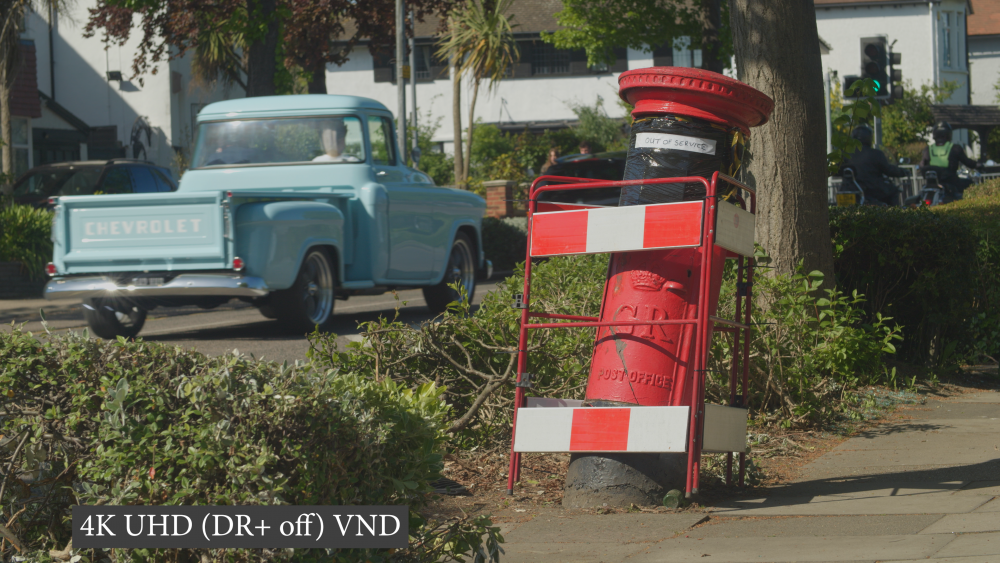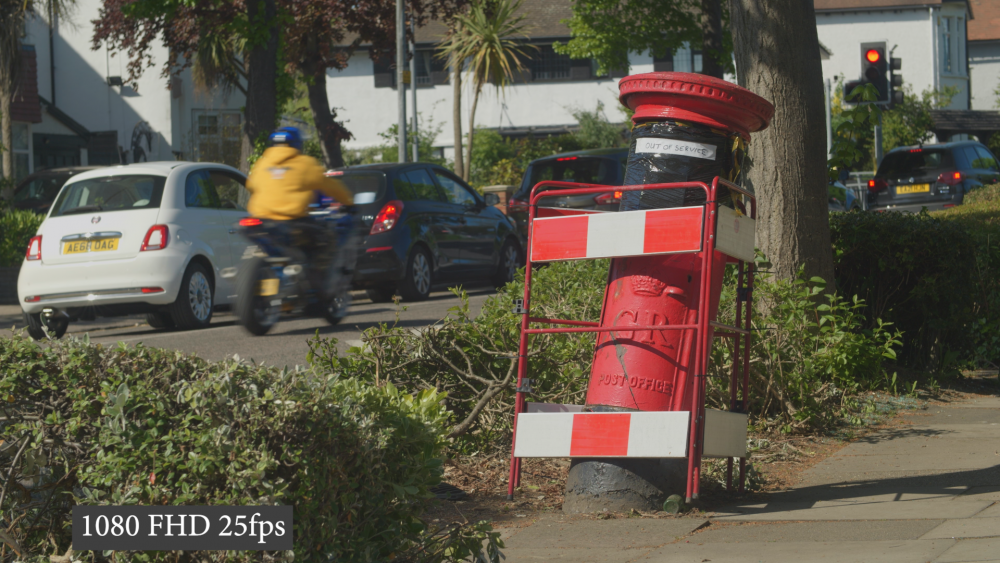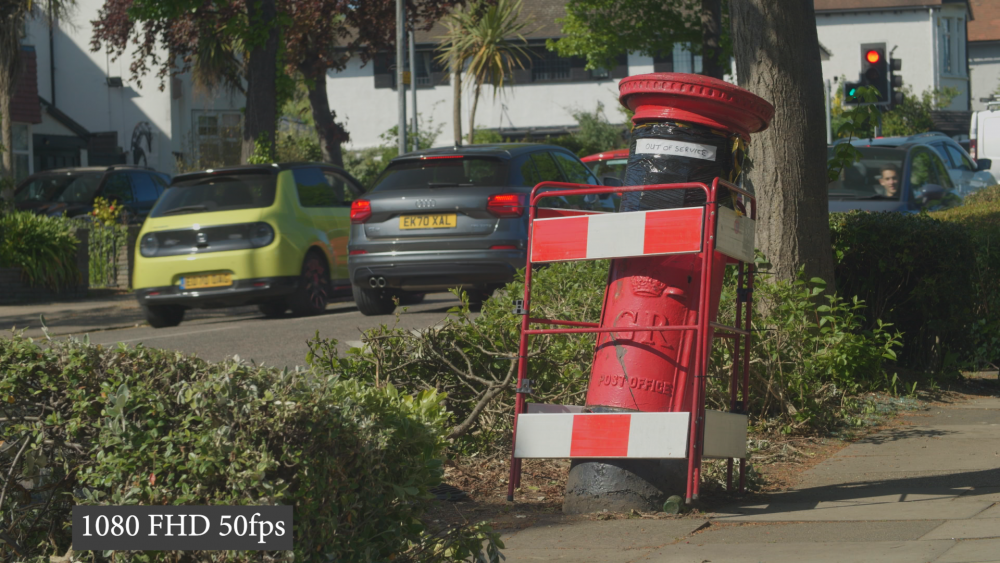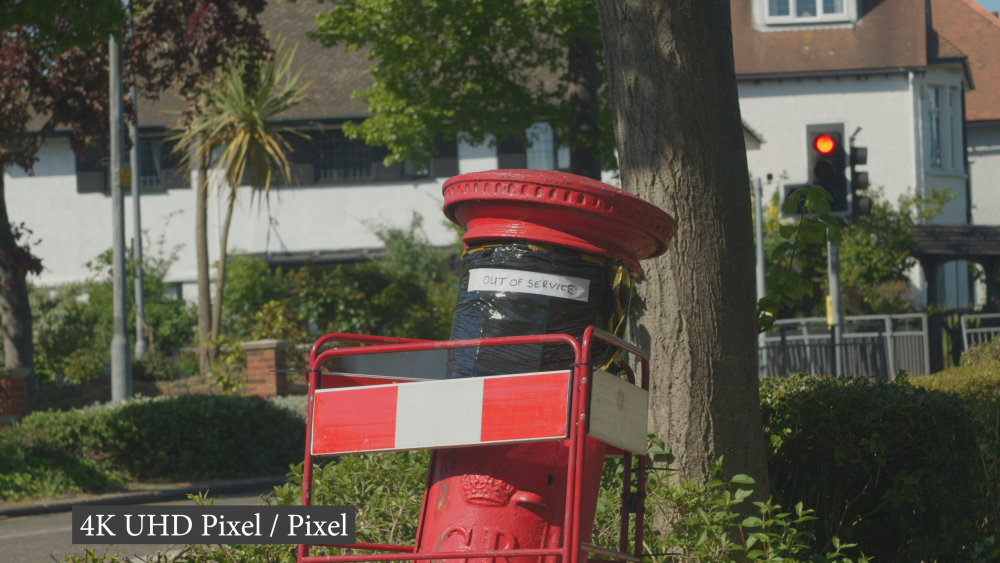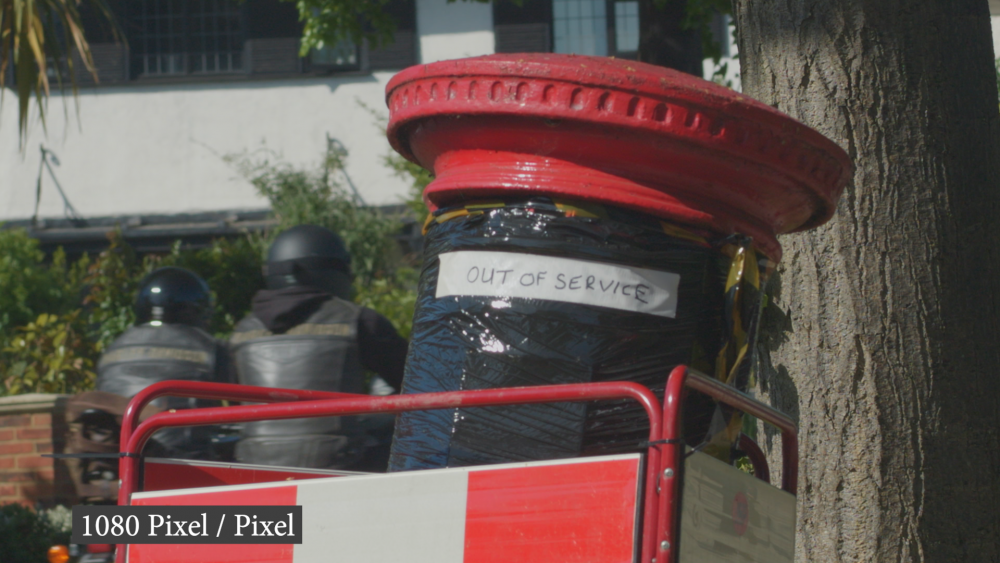
Mmmbeats
Members-
Posts
421 -
Joined
-
Last visited
Content Type
Profiles
Forums
Articles
Everything posted by Mmmbeats
-
Noise experience can be very subjective because 1) people expose using different strategies, 2) cameras get pointed at different things, 3) what one person deems 'noisy' might be tolerable for someone else. I will say - I've been fine using the C70 in the higher ISO ranges. I think it will be interesting to see how the two sensors (with their different approaches to low-light) compare at different ISO values. I think its going to be closer than people think (though not at 12,800 or so, obviously!).~ I do agree with you about the C70 to an extent. I've said it myself before that it can sometimes be a bit too soft. Thing is though, I think the speedbooster and EF lenses add to the issue with the C70. I've been using the RF 24 - 105 a lot recently and it has really made me re-evaluate the sharpness of the C70. Basically it responds well if you pair it with really sharp glass. Dunno what to say about your exposure experiences between models. There are variations in how camera systems respond to exposure standards, but there shouldn't ever be a stop deviation. So many factors to consider though - adaptors, settings, etc. I'm not sure what's up there.
-
Full video here: https://www.youtube.com/watch?v=sGYQQgybiXk
-
I'm pretty dubious about all of that! I'm not so sure about the low light 'big advantage'. Yes, the 12,800 ISO base is going to be a fantastic feature, but the C70 is already a fantastic camera in low light because of the rich inky blacks you get with DGO. You're essentially getting an additional exposure at the shadow level and (with the great dynamic range) you get fantastic low-light imagery. This was actually a key factor that made me buy the camera in the first place. I film in subterranean poorly-lit locations with the C70 all the time, and it is brilliant for those kind of scenarios. Unlike the cameras that have to crank up ISO (like the A7S derived Sonys) you get great highlight control alongside rich shadows. The C400 (albeit pre-production at this stage) looks noisy and thin by comparison. Also - when do you ever actually shoot at 12,800 ISO? Like I say, I shoot in dark spaces very often, but never require that kind of facility. Don't get me wrong - it's a nice feature to have, and might come in handy here and there. But it isn't a key feature in my books, almost always makes things look unnatural, and you are going to be better off with DGO in most situations. I'm talking here as someone who is likely to buy the C400 and is excited by it, so I'm not trying to rubbish the sensor tech and implimentation (which is the same as the C80). C70 is soft by design, just like many high-end cinema cameras. Its a point of preference really, and not something that needs to 'fixed' in my view. I'm looking forward to being able to choose between softer (doc and fiction) and sharper (corporate / client work). You don't lose a stop of light between sensor sizes. Speedboosters work in a unique way to refocus light, which is where the stop gain comes from. I notice that the C80 has SDI though - that is another differentiator from the C70 (HDMI only).
-
Makes sense if you are a C400 owner looking for a companion cam. But otherwise the C70 is going to be a better camera in my view. The DGO sensor is magnificent. I'm planning to pair the C400 with my existing C70, which will create matching issues (sharpness, sensor size), but will give me a lot of flexibility.
-
Basically, if you have an endorsement for the first option, you need to also have an option for people with informed opinions who don't endorse the workflow. Like having an option for both 'Yes' and 'No'. Therein lies the bias in my opinion. Seen all the Golden Heart trilogy stuff, thanks. Not sure the relevancy, but cheers anyway. I'm enjoying the thread. More so than the poll.
-
The first option is for people who endorse the workflow. The second option is for people who haven't used the workflow (which implies they don't know, one way or the other). The third option is also for people who don't know. The fourth item makes no grammatical sense whatsoever. I get that English is likely a second language, and I'm not trying to call that aspect of things out here - but if you want an unbiased poll, you need to present fairly-weighted options.
-
Badly designed poll.
-
Well, they are Reds now, so it makes sense.
-
Aputure are bigger than Nikon at this point 😜.
-
The 3D animation stuff looks the scariest. Not my industry, but it looks like it's seriously coming to get that sector in the near future. They are first. The realism and uncanny valley issues are not so important. It's a really technically demanding field, so this will smash down barriers. Be interesting to see how people mitigate. For what it's worth, I think there will still be plenty of stuff for people to develop expertise in, it's just going to be quite a different load of stuff.
-
I think people brushing this aside are being a bit short-sighted, bordering on naive. I'd say that what we've seen so far from text-to-image from machine learning has been - Quick developing. One month it's all fuzzy, the next month it's all smoothed out. One month there are 11 fingers on each hand, a year later there are only 6.😅 In other words - it iterates fast. Unpredictable. As even a tech-savvy person, it is really hard to predict what 'AI' (I don't like using that term) is going to be good at, and bad at - 🖐️! Far reaching. Useful. I'm not a particular enthusiast, but I have used Adobe's AI tools on around 75% of the projects I have delivered as a freelancer over the past 6 months or so. And that's just casually discovering things that make my life *tons* easier. I also believe them to be reasonably ethical, or I wouldn't be using them. Similarly, I think the impact of this will be quick developing and unpredictable. The biggest threat I think, may be that unpredictability itself. It's going to be very difficult developing a workflow, without knowing whether it will become undermined by a much easier AI pathway at some not-so-distant point. Example - I recently decided to really lean into doing 2.5d and true 3d animations from flat artworks as a client offering (for context, a lot of my clients are museums). To really develop skills in this using tools like Cinema 4D, Projection 3D, DUIK, etc. will take a couple of years of learning as I go. I very much doubt that AI will explode into use in that time, but certainly at some point just beyond that horizon I wouldn't be at all surprised to see a turnkey AI tool that offers very professional bespoke 3D animation from still images. That's very up AI's street. Aside from some very obvious things, like news gathering, I don't see anything that machine learning could not potentially impact within the foreseeable future. This includes - editing a corporate film from start to finish from supplied footage almost instantly, with several versions to choose from; writing a compelling and original television series (yes, I honestly believe that machines will be doing this); creating photo-realistic footage of any location in the world that has been photographed more than 3 times, etc., etc. Of the course the nature of unpredictability is that just as equally, none of this might happen. But I think the main point to make is that the scale of the threat (to professional livelihoods) is so profound, that anybody just blithely ignoring it has their head in the sand to my reckoning.
-
I can only imagine the colorist was told 'show how much the colours can be pushed with RAW' and took the brief a bit too literally!
-
Strangely garish promo video:
-
12-bit ProRes RAW external too!
-
Ooooh, tasty new firmware update announced today! ProRes internal at lower resolutions (C4K and 1080). Win!
-
Yes, I'm finding the time of use similar (though I haven't timed it or anything). The old batteries seem fine really.
-
Battery life is pretty poor. That said, we've been a bit spoiled with the GH4 and GH5S in particular. Battery life is in line with most other cameras of its type. You need about 4 or 5 batteries to get through a day's shoot I'm finding. I'm using mainly the old GH5 batteries, which offer good basic functionality.
-
There is a possibility that I missed focus on the 1080 Pixel / Pixel shot. It's hard to tell as the quality of that setting is pretty mushy!
-
Righto. Slightly embarrassed as I shot these almost a month ago now, and I'm sure they would have been a bit more useful then, but anyway... All shot with DR Boost turned off (I almost always have it turned on now). I used a bit of VND to regulate exposure. Focus is on the post box. These are 'as shot', resolved with Nicest 709 LUT, which is a Panasonic LUT for V Log. I usually tame the saturation a bit! [These have loaded in the reverse order I intended. You might want to view them from the bottom up!]
-
I'll do it later today (UK time). It's really the first day I've had with any semblance of time sanity for quite a while. Thankfully I've been getting some exciting but demanding jobs all in a row lately.
-
I did follow up on shooting some quick test shots at 1080p, but then got very busy and couldn't get back to this thread. Then, funnily enough, I had to shoot a project in 1080p (client request). I'll post up some stills when I get a mo. My initial thought were that the image looks sharp and detailed. The 1080p pixel / pixel mode looked a bit mushy though. I wouldn't use it personally.
-
I totally agree about V Log. I used to be a bit intimidated by it till I sussed it out. Now I hardly even think about it. In post (in Premiere) I tend to put an instance of Lumetri with an input LUT on one of the master clips, and then cut and paste it onto all the other master clips at once (you can't use the Paste Attributes method on master clips for some reason). Takes about 30 seconds and is very 'set and forget'. Forgot to highlight that the focus magnification function now works during recording. Finally! I keep forgetting that it does this and messing myself up because I have a long-standing habit of using the record button to simultaneously initiate recording and dismiss the focus magnification 🤪.
-
It's definitely tilted towards the needs of the professional user over the casual enthusiast I would say. Features like DR Boost, ProRes internal, and compulsory 4-channel audio (you can't take a stereo track into post as far as I can see), potentially make life better for the dedicated pro, but probably more fiddly for the enthusiastic amateur. Full V-log curve seems to be a bit of a gimmick as you're not able to stretch the DR past what V Log L would have allowed from what I can calculate (admittedly not my area of expertise). V Log highlight clipping occurs around 88 IRE (compared to 82 for V Log L, and 109 for full V Log range). That said, as previously mentioned, DR Boost is definitely worthwhile, and gives the crucial little bit of DR I've been crying out for with this series. It doesn't turn the camera into a dreamy DR monster, but it does take the edge off of that burnt-out DSLR look, and seems to help both highlights and shadows. I don't want to oversell it, because it really just adds a touch of latitude rather than a major transformation, but its a very useful addition in my book. What is also fantastic is full V-Log gamut, which seems to be providing much richer, more natural and accurate colours. I'm really enjoying shooting with it. I think that if you're not going to be using V Log you've got some problems though. DR looks much reduced, and from looking at online tests it looks like it may be even worse than the GH5! That's not good news really. Is there any point in using Linear DR+ mode when V Log (with DR+ Off) offers greater dynamic range? I'm really pleased with my camera so far. It's familiar enough that I'm getting some muscle-memory imbedded straight away, but progressive enough that its challenging me in some interesting new ways. As well as the obvious headline features, one thing that really strikes me is that Panasonic have really sat down and thought about how to make this camera better from top to bottom. Some innovations I really like are: Improved Custom Modes. You can now save 13 Custom Modes (and crucially give them names that come up on the screen when you turn the dial). That's up from 5 (un-nameable) on the GH5 if memory serves correctly. Same topic, but you can now choose how the custom modes respond to shutdown/sleep, etc., even to the point of excluding certain values. This is massive because the previous CM system was practically unusable due to the way it kept resetting exposure values 😖. There's a lock switch, and again, you can dial in exactly what you want it to lock and not to lock. I'm using it just to protect my shutter angle dial. Hallelujah! You can use 4-channel recording in conjunction with the (separate accessory) XLR input and the minijack socket. You can now (I think) use this setup to patch a safety channel from the XLR, which you annoyingly couldn't do before (despite the availability of the stereo channels). The exposure tools are improved. There's a nice luminance spot-meter which works well (though they want you to switch your thinking from IRE values to stop values when shooting log, which I'm finding a bit of an adjustment). The waveform is now bigger and actually useable (though it has no value scale). The camera is palpably heavier, which is helping me to get steadier footage when going handheld (along with the excellent IBIS of course), but I appreciate this will be a negative factor for some. You can get a surprising amount of functionality with the old GH5/GH4 batteries. I can't remember the exact limitations, but basically you just can't record in the super-duper modes (5.7K, 800Mbps and above, ProRes, etc.), but everything else works fine. I expected the limitation to be much more than that. I can see certain people just sticking with their existing batteries to be honest. The restrictions are similar (possibly identical) to those between V60 and V90 card recommendations from what I recall. The battery lock tab (inside the battery enclosure) is now white instead of black so you can easily locate it in the dark. Admittedly this is not a significant feature in any way, shape or form, but I'm really happy to see it because it tells me that somebody has been going over every inch of this camera series and trying to find incremental ways to improve it. Some things I'm not so keen on - The whole 2000 ISO or bust thing. It seems to me that if you are going to buy this camera, the top end DR improvement is one of the biggest draws. You will have to develop a new ND strategy to use it freely. To be honest it hasn't been the nightmare I was anticipating. I love the DR Boost mode image output, so I might just adjust my thinking and continue to operate at ISO 2000. It's nice for low-light in any case. Battery life, which used to be the strength of this series (GH4 💪) is now distinctly meh. But I guess that's just the price you pay for IBIS, Dual Gain sensor, fan, etc. I've only just started to get to know this camera. I haven't tested any of the high speed modes (look fantastic online!) or photo features (ditto). Overall , I'm really pleased with it. Coming from the GH5S, the improved image quality (I was already happy with the GH5S to be honest) and addition of IBIS is an absolute killer already. It doesn't lag too far behind the GH5S for low-light either, seeming totally useable up to 4000 ISO (VL DR+), which is more than enough for me.
-
Yeah, I feel you. The GH4 was the classic easy to use camera in my experience. Here we are 2 gens later and its like flying a spaceship! But I am personally very happy to pay the usability price for the advancements in DR, low-light and stabilisation (and the other incremental improvements).
-
I think the trick with any kind of camera really is learning its capabilities and then settling into a workflow that is the ideal blend of convenience and perfectionism for your own personal tastes. I'd be a bit suspicious of anybody who didn't at least try to maximise the performance of their equipment, but I'd be equally dubious of anyone who claimed to make zero compromises in how they end up operating in the field. It's all a balance. The main quandary with the GH6 is in managing the jump between Base ISO 250 (V-Log, DR+ Off) and ISO 2000 (DR+ On). The Dr Boost function is very good and finally lifts the GH series into the heady realm of 'just about acceptable DR' 😅. Actually, so far in practical use it has been fairly easy to utilise DR+. I've invested in some high quality fixed ND (Breakthrough X4 - cannot recommend them highly enough) and just whack on the 6-stop and then calibrate a bit using ISO. Has been working well so far. Obviously this strategy will not cover all eventualities. I'm a bit torn as to whether to just stay in DR+ mode regardless of the actual dynamic range of the scene (thus negating the need to constantly jump between very different ISO values). It's going to be a close call actually.




